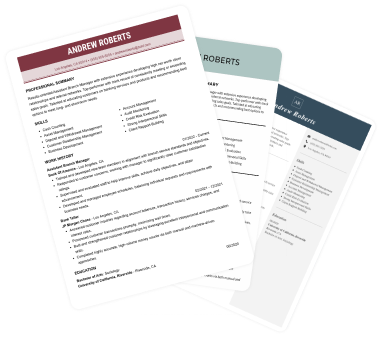
Top 50 Highest Paying Jobs in the UK in 2025
See the top 50 highest-paying jobs in the UK for 2025 across different industries. Explore salary ranges, job descriptions, and expectations.
November 7, 2025
Last updated on 7 November, 2025

In an age where AI and automation promise unprecedented efficiency, Britain is witnessing a surprising countertrend: a revival of time-honoured trades. As algorithms reshape white-collar work, discerning consumers seek the human touch – be it a hand-stitched leather satchel or a bespoke millinery creation.
From forges to food trucks, these 13 classic professions are thriving on high streets and in rural studios alike. Discover how traditional skills are carving out a resilient niche alongside AI’s rise, and why now is the perfect moment to embrace craftsmanship.
Why it’s back:
UK consumers are rejecting mass-produced goods in favour of bespoke, handcrafted leather accessories – hand-stitched bags, belts, and journals that tell a story of quality and craftsmanship.
Typical earnings:
Leatherworkers in Britain can earn around £33,400 per year, depending on commissions, export sales, and direct-to-consumer pricing.
Getting started:
Short courses (e.g. at London College of Fashion) or traditional apprenticeships teach hide selection, hand-stitching, and finishing. Building a social-media portfolio is essential for reaching niche markets.
Why it’s back:
The resurgence of traditional wet shaves, beard grooming, and classic men’s cuts has driven barber shops back onto British high streets.
Typical earnings:
Barbers in major UK cities earn a base salary of up to £30,000, with tips and product sales often pushing total income well above this threshold in busy salons.
Getting started:
Obtain a Level 2 Barbering Diploma (VTCT or City & Guilds), then train under a master barber. Masterclasses in straight-razor technique and beard styling are highly recommended.
Why it’s back:
A boom in period-property renovations and bespoke furniture demand has revived interest in traditional carpentry skills over flat-pack solutions.
Typical earnings:
Experienced, full-time carpenters earn up to £40,000.
Getting started:
Pursue a Level 2 or 3 Diploma in Carpentry & Joinery alongside a City & Guilds apprenticeship. Membership of the Guild of Master Craftsmen enhances credibility for bespoke commissions.
Why it’s back:
Digital mapping and GIS are critical for local-authority planning, flood-risk modelling, and transport infrastructure, driving demand for skilled cartographers.
Typical earnings:
Entry-level GIS technicians start at around £24,000; experienced cartographers or project leads in consultancy or government roles earn up to £45,000.
Getting started:
Begin with a degree in Geography, Geomatics, Surveying, or a related field. Supplement with training in QGIS and/or ArcGIS, which are industry standards. Drone-based photogrammetry training adds high-value drone surveying skills often sought in planning and environmental roles.
Why it’s back:
Over 7,000 mobile street-food units now operate across UK markets, festivals and corporate parks – triple the number of five years ago – and the sector grows ~20% year-on-year.
Typical earnings:
Food trucks in London can earn upwards of £70,000 to £100,000 annually or even exceed that amount; net profit depends on overheads (vehicle hire, pitch fees) and seasonality.
Getting started:
Secure Level 2 Food Safety & Hygiene certification and a street-trader’s licence. Begin with pop-ups or market stalls before investing in a complete food-truck conversion.
Why it’s back:
Heritage Crafts reports ~300 full-time UK signwriters today, driven by demand from pubs, boutiques and heritage restorations; city councils also commission murals to enliven urban spaces.
Typical earnings:
Sign painters earn on average £27,560 annually, while mural artists make around £29,000.
Getting started:
Attend hand-lettering and mural-painting workshops at local art centres. Master paint chemistry and weatherproofing for outdoor work.
Why it’s back:
Tesco’s 2024 nationwide search for artisan cheesemakers, driven by a regional cheese category now worth ~£12 million and growing, reflects surging consumer appetite for local cheese varieties.
Typical earnings:
Entry-level cheesemakers earn, on average, approximately £25,000; senior professionals can make approximately £31,000.
Getting started:
Start by taking a cheesemaking course that covers milk chemistry and ageing techniques. Get hands-on experience through a placement or apprenticeship at a working dairy. To sell your cheese, you’ll also need basic food safety training and a good grasp of food business practices.
Why it’s back:
A strong sustainability movement and rising footwear costs have driven people to repair quality shoes rather than replace them, reviving traditional cobbling services.
Typical earnings:
Cobblers in the UK can count on a salary range between £22,000 and £37,000, with an average base pay of approximately £28,000.
Getting started:
Learn through specialist workshops combined with mentorships and self-directed practice.
Why it’s back:
Independent beer production in the UK rose by 14% last year, and 55% of UK drinkers now prefer locally-brewed craft beer (up from 47% in 2023), underlining the sector’s rapid growth.
Typical earnings:
Entry-level brewers working for a major brewer start at approximately £24,000; team leaders and shift brewers earn £35,000–£40,000; head brewers can make more than £60,000.
Getting started:
Take SIBA or Institute of Brewing & Distilling courses; gain hands-on experience at a craft or microbrewery.
Why it’s back:
Heritage restorations and bespoke metalwork, such as wrought-iron gates, decorative hardware and sculptural art, have created a niche revival for artisan blacksmiths.
Typical earnings:
Blacksmiths earn between £23,000 and £40,000, with the average base pay equal to £30,000.
Getting started:
Complete a City & Guilds Level 2 Diploma in Blacksmithing or a traditional forge apprenticeship.
Why it’s back:
UK craft fairs have boomed, with under-35s now making up 32% of attendees (up from 17% in 2006), illustrating growing demand for handmade ceramics and homewares.
Typical earnings:
Starting salaries for early-career studio potters earn £15,000–£18,000; established ceramicists with wholesale or export clients can exceed £30,000, with top artisans earning even more.
Getting started:
Begin with evening classes at local art colleges or specialist schools (e.g. Leach Pottery). Invest in a small kiln and join the Craft Potters Association for exhibitions.
Why it’s back:
Royal Ascot’s new “Millinery Collective” and a £10,000 annual bursary (from 2025) for UK graduates reflect renewed institutional support for bespoke hatmaking.
Typical earnings:
The standard going rate for milliners in the UK is £33,400.
Getting started:
To become a milliner, develop strong hand-sewing, hat-making, and design skills. Take formal courses or apprenticeships, build a portfolio, and gain studio experience.
Why it’s back:
The Contemporary Glass Society notes that 800+ craftspersons – many working in glass – have received QEII Scholarship Trust grants, demonstrating sustained institutional backing for the art.
Typical earnings:
Starting salaries begin at £20,000+. Experienced glassblowers or professionals employed by large enterprises can make more than £35,000.
Getting started:
Take a degree or vocational course in glass or ceramics, or train on the job through apprenticeships or studio workshops. A strong portfolio is key.
While AI continues to transform industries from finance to manufacturing, the enduring value of human artistry has never been clearer. Britain’s resurgence of old-school jobs underscores a collective desire for authenticity and sustainability that no machine can replicate.
Whether you’re drawn to the rhythmic hammer of a blacksmith’s forge or the precise artistry of a sign painter, these 13 trades offer rewarding, future-proof careers. In a world of intelligent algorithms, it’s our uniquely human skills that will continue to shape and enrich lives.
The list of 13 revived trades in “Back to the Future: 13 Old-School Jobs In Demand Now” was compiled from a focused review of UK-specific labour market data, sector reports, and on-the-ground signals about craft and small business demand. Our process included:
This approach ensures the featured trades reflect verifiable UK signals and practical pathways for readers considering a move into traditional craftsmanship.
Our editorial team has reviewed this article for compliance with LiveCareer’s editorial guidelines. It’s to ensure that our expert advice and recommendations are consistent across all our career guides and align with current CV and cover letter writing standards and trends. We’re trusted by over 10 million job seekers, supporting them on their way to finding their dream job. Each article is preceded by research and scrutiny to ensure our content responds to current market trends and demand.
Category: Career Advice
Crafting a job-winning CV is all about showcasing your unique skills and experiences. Start with a strong personal statement that highlights your career goals and achievements.
Try Our CV Builder Now